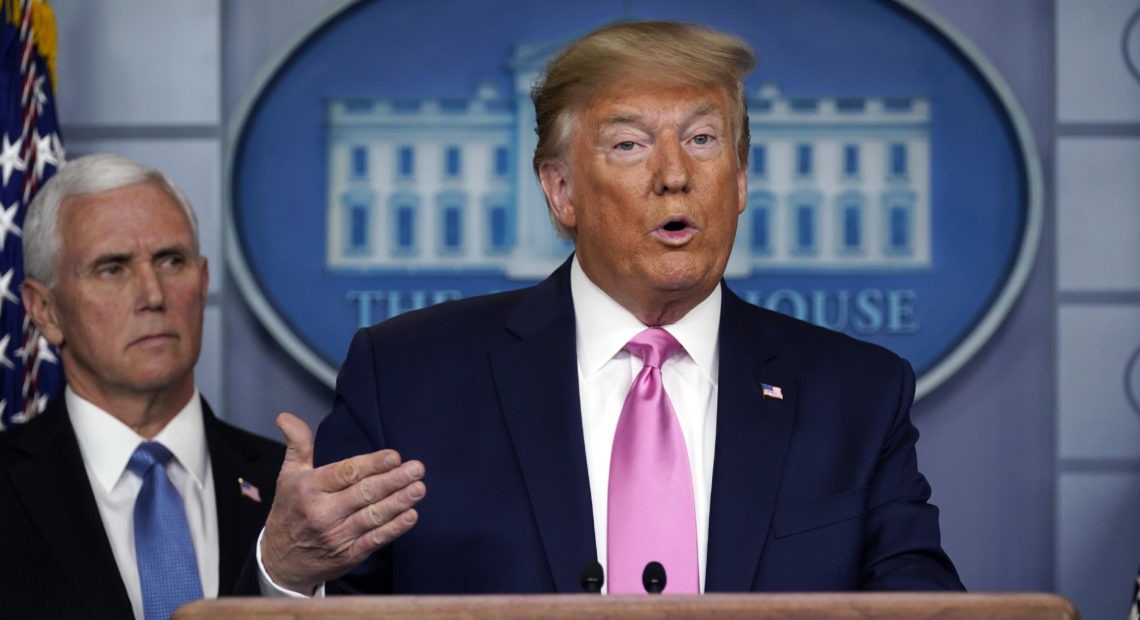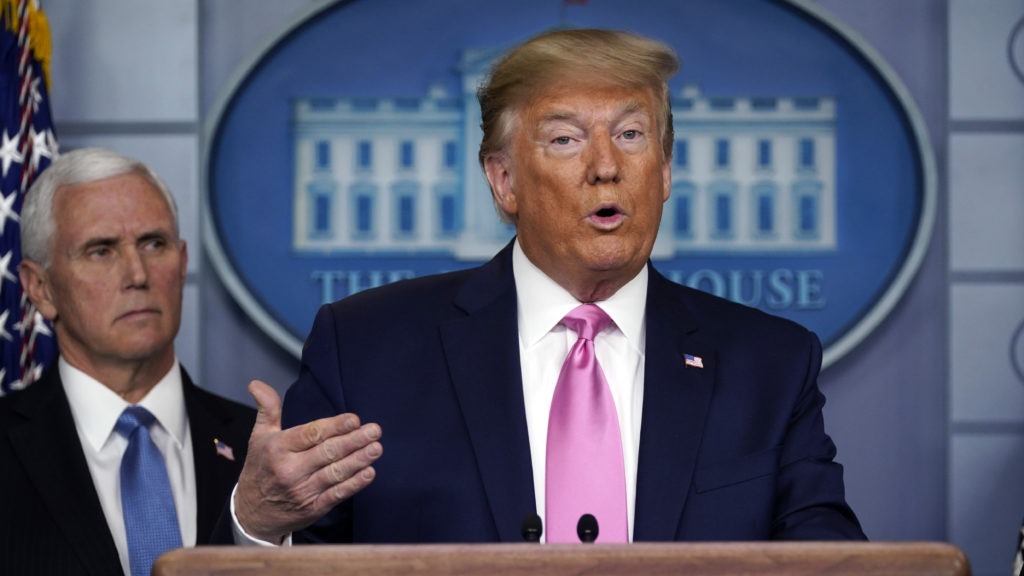
President Trump Appoints Mike Pence To Lead Government’s Coronavirus Response
BY VANESSA ROMO
Hours after the White House rejected the idea of appointing a coronavirus czar, President Trump on Wednesday put Vice President Pence in charge of the administration’s response to the disease.
“We’re doing really well, and Mike is going to be in charge,” Trump said, noting that Pence’s experience as governor of Indiana made him adept at working with state and local health authorities.
“This is not a czar,” the president later added.
The president’s remarks came as the Centers for Disease Control and Prevention disclosed a new case of the COVID-19 disease in California that could represent the first U.S. case of the virus spreading within the general population.

President Trump speaks as Vice President Pence listens during a Wednesday news conference about the U.S. response to the new coronavirus.
CREDIT: Evan Vucci/AP
At the White House news conference alongside members of the administration’s coronavirus task force and health officials, the president insisted that the risk to the American people from the virus “remains very low.”
He also noted that the “regular flu” kills many more people each year. He took credit for making “very good early decisions” that helped prevent the new coronavirus from becoming more widespread in the United States.
“We’re ready to adapt and ready to do whatever we have to as the disease spreads, if it spreads,” he said, adding that he plans to add an unnamed specialist from the State Department to the White House team.
Trump said he would work with Congress on funding. His administration has asked for $2.5 billion, but he said lawmakers appear amenable to offering much more money.
“Congress is making it very easy. … It wasn’t very easy for the wall, but we got that one done,” he said.
Pence praised the president for the current containment strategy, including travel restrictions, quarantine measures and assembling of a coronavirus task force “that has been meeting every day.”
“As a former governor of the state with the first MERS case, I know full well the importance of presidential leadership and administration leadership and the vital role” of state and local agencies, Pence said, referring to Middle East respiratory syndrome.
In the latest case, the CDC said it was unclear how the patient got the virus. According to officials, the infected person reportedly did not have a history of travel to a region where the virus is spreading — or exposure to another person known to have COVID-19.
The CDC says it’s possible that the person may have been exposed to a returned traveler who was infected.
During the news conference, Dr. Anne Schuchat, principal deputy director of the Centers for Disease Control and Prevention, appeared to walk back statements made by her colleague, Dr. Nancy Messonnier, who on Tuesday suggested a large outbreak is imminent.
Still, Schuchat said the CDC expects more cases and cautioned local and state institutions to review pandemic preparedness plans.
As of Wednesday, the coronavirus disease COVID-19, which was first diagnosed in Hubei province in mainland China, has reached 37 other countries, according to World Health Organization officials.
“Yesterday, the number of new cases reported outside China exceeded the number of new cases in China for the first time,” WHO Director-General Tedros Adhanom Ghebreyesus said at a briefing in Geneva.
The number of confirmed cases globally has surpassed 81,000, according to a dashboard created by Johns Hopkins University’s Whiting School of Engineering. More than 30,000 of those are cases in which people recovered from COVID-19.
Concern over the virus and the United States’ preparedness have reached both sides of the political aisle in Washington as the administration has already run out of money in its infectious-disease rapid-response reserve fund.
On Wednesday morning, Democrats and Republicans grilled Health and Human Services Secretary Alex Azar as he appeared before a House Appropriations subcommittee. The administration is requesting an additional $2.5 billion to combat the respiratory virus.
But many lawmakers see that as an inadequate sum to confront the challenges of a potential health crisis and are crafting emergency response packages ranging from $4 billion to $8.5 billion.















